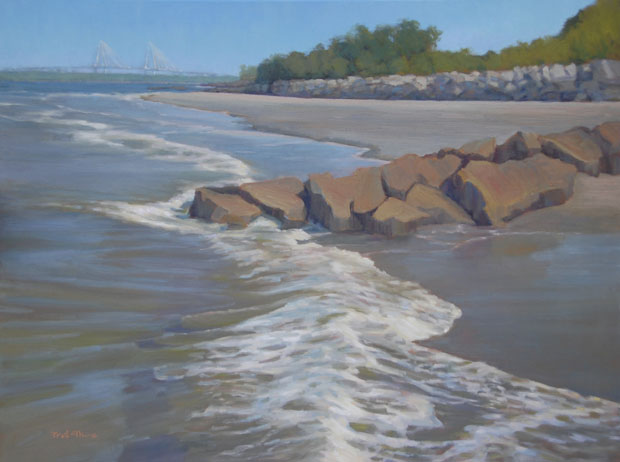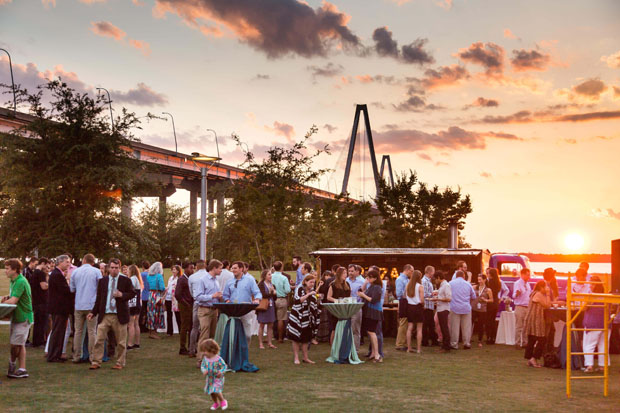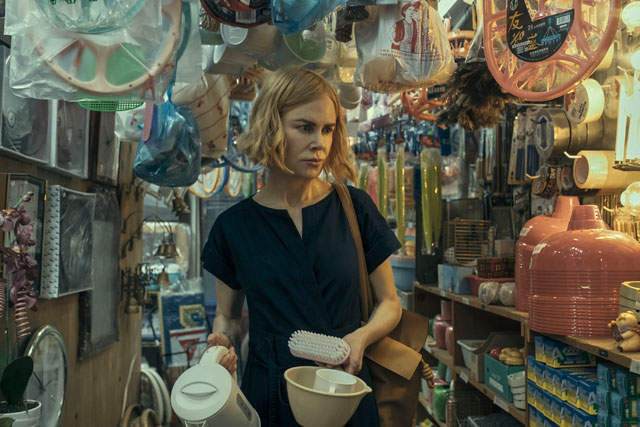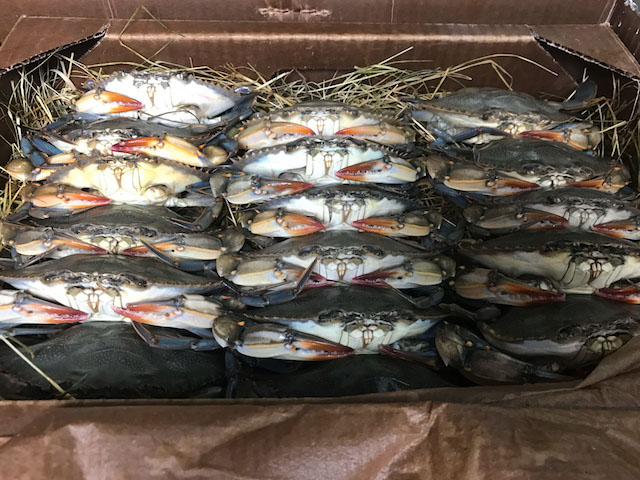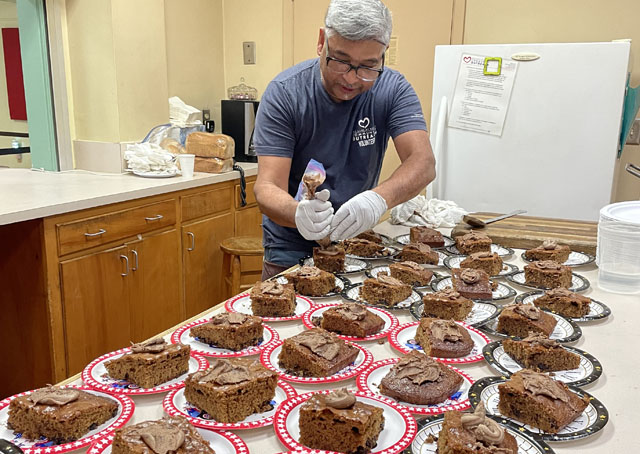The Last Resort
07 May 2016
Sullivan's Island became the first Resort out of necessity, as people came to the beach to escape the summer perils of living inland
By SUZANNAH SMITH MILES
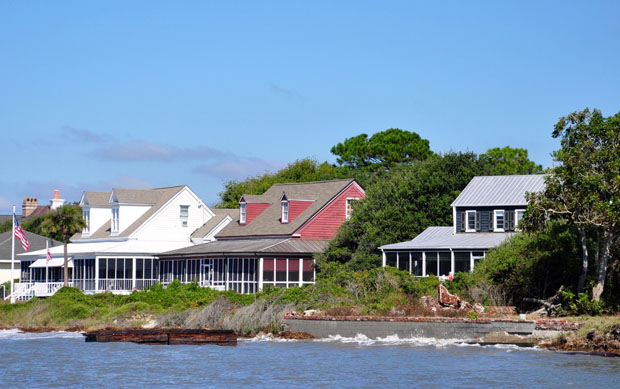
Resort. Today, the mention of the word evokes images of a crystal blue ocean and iced fruit punch served at poolside. We think of tennis and golf, of sparkling white beaches and expensive chocolate on the pillow at bedtime – of relaxing in pampered splendor while we enjoy a vacation.
The last thing we think about is disease.
Yet it was the fear of illness that eventually brought Sullivan’s Island to an early forefront as one of the first resorts in America. Without question, the island was (and is) a refreshing alternative to the hot, humid Lowcountry summer. Yet its origin as a summering place began with a far more practical purpose.
In the late 1700s people began “to resort" to the island to escape sicknesses. This first resort was, in fact, a last resort when it came to living through a summer plagued by disease. Basically, people "resorted to" the island each summer because they were running for their lives.
"Disease malignant fills the Air/Its noxious Atoms far and near..." Thus began a poem printed in the February 16, 1760, South-Carolina Gazette. Smallpox, yellow fever and a host of other "contagious and malignant distempers" plagued these early times. They were known by any number of colloquial names – stranger's disease (so called since newcomers, or strangers, were frequently affected), country fever, and the morbidly graphic term for yellow fever, black vomit.
Epidemics were frequent and brought tragic consequences. During the 1760 smallpox epidemic that occasioned the poem written in the Gazette, approximately 6,000 people were infected; over 800 died. In those days death hovered just around the corner, especially during the "sickly season," the term given to the disease-ridden summers.
Medicine was rudimentary, at best. Physicians didn't know the cause, much less the cure, for these summer maladies. They didn’t yet know that the mosquito was the culprit behind yellow fever and malaria and that a flooded rice field was a virtual mosquito breeding pond. They attributed these "country fevers" to the environment – the "bad air" (hence the word malaria) of the semi-tropical, swampy interiors.
Thus each summer, planters and their entire families fled plantation and town for a place where the air was considered healthy. Starting in the 1790s, Sullivan's Island began to burgeon as a summering place. It was soon followed by the village area of Mount Pleasant (which was then fronted by a broad, white beach.) McClellanville grew as a summer refuge for Santee River plantation families. Similar communities sprang up at Kiawah, Seabrook and at Rockville.
Of all, Sullivan’s Island was the most popular. Yet by no means did the island of those days offer the elegant digs we've come to expect from a resort today. Wrote Francis Hall, an English officer visiting Charleston in 1816, "all the inhabitants who can afford it... fly to a barren sand-bank in the harbour, called Sullivan's Island, containing one well, and a few palmettoes; there they dwell in miserable wooden tenements, trembling in every storm, lest, (as frequently happens) their hiding places should be ablown from over their heads, or deluged by the inundation of the sea."
While the seaside air was healthful, not everyone escaped disease. When his wife was stricken with fever, Charleston artist John Blake White moved to the island in hopes of a cure. His July 26 diary entry read, "Early in June Eliza is taken with a severe disposition. We remove to Sullivan's Island, but find no relief." She died within three months.
Caroline Gilman, author and wife of the eminent theologian, Dr. Samuel Gilman of Charleston’s Unitarian Church, spent summers on the island in the early 1800s. She described how the family would stroll to the ferry landing each day to observe the arrival of the packet boat, “bringing from the city their customary motley group. There were reclining invalids with their eyes shooting a sudden brilliancy, as the sea-breeze swept over their languid brows; sickly infants, seizing the first relished morsel."
By and large, the island’s “salubrious” air was healthier. The constant southerly breeze coming off the ocean not only brought cooling fresh air, it blew the disease-carrying mosquitoes away. Finally, by the mid-1800's with medical advances and the introduction of preventive inoculations, diseases became less virulent.
Yet the century-old habit of spending the summer by the sea had become thoroughly engrained into Charleston society. While many Charleston families either took a cottage on the island for the season or owned their own beach home, the island’s popularity brought forth the necessity of offering places for more transient visitors to stay.
Small hotels, boarding houses and cottage lodgings flourished during the summer months. Mrs. Cheney’s Boarding House, later known as the Planter’s Hotel, was located near the back beach by the boat landing at the Cove. Mrs. Fitzsimons’, perhaps the island’s oldest boarding establishment, had entrances on both the back beach and on Middle Street. Mrs. Muggridge’s establishment was on the front beach. McIntyre’s overlooked the Cove. At the very tip of the island was the Point House. With its grand view of the harbor it was one of the island’s most popular hotels until it was destroyed by the hurricane of 1854.
This culminated with the erection of the exclusive Moultrie House Hotel in July 1850. Here, guests were now indulged with the delicious food, fine rooms and the elegance one expects from a resort today.
The terminology had changed. Instead of "resorting to" a place to escape, one went “to a resort" to play and be pampered.
The Moultrie House
This elegant and majestic hotel was built on the beachfront just to the east of Fort Moultrie, with a glorious view of the harbor and ocean. Designed by architect Edward C. Jones and built at a cost of $32,000, the hotel opened on July 8, 1850 and boasted luxurious accommodations for two hundred people. The Moultrie House quickly gained a national reputation as a luxury hotel.
"I never saw anything like it before," wrote William Gilmore Simms through his fictional character, Tom Appleby, in the whimsical short story, Flirtation at the Moultrie House.
"The supper tables were glorious, feeding eye and appetite at the same time, to the great satisfaction of both. Think of the oysters alone costing more than forty dollars and you will have some notion of all the rest… The wines were in great profusion, and the popping of champagne was as frequent as that of musketry at the battle of San Jacinto… We did not break up till three in the morning, and then a dozen of us took to the beach, and stripping for the sea, had a glorious buffeting for twenty minutes in the breakers."
Charleston historian Dr. John B. Irving described the hotel in a promotional pamphlet, writing that, “The building proper, is 256 feet long and 40 feet wide, with wings at end 100 feet long, 35 feet wide, with front piazza 16 feet wide, and back piazza 10 feet wide…. Its situation is most judicious, commanding an inspiring view of the Harbour and Bay of Charleston, and of the Sea… the surf of which dashes up on a wide beach, not many feet from the Hotel, and then breaks into little billows, which as, if instinct with life, keep continually chasing each other like children in play far up on the sand."
The Moultrie House offered "no deficiency of amusements," said Dr. Irving, adding that among its many amenities were four billiard tables and three bowling saloons. There were horses for riding, boats for fishing and "none but the choicest liquors."
The first floor was designed so that the hotel’s east wing held a succession of spacious rooms linked by large folding doors which, when opened, formed a huge grand ballroom. Throughout the summer season, this ballroom saw a constant succession of balls, musicals, teas and masques -- a place both popular and notorious for its "flirtations."
"I have half fallen in love with one of the Charleston girls," wrote the fictional Tom Appleby, "as fair as a lily and gentle as a zephyr. But no more of this. It may be after all, nothing but a flirtation. This is a famous place for flirtation, I find, and the practice, which might worry a too earnest fellow, has nevertheless, something very graceful and pleasant in it."
The west wing held the spacious dining room, 90-feet long and 28-feet wide, with multi-paned, floor-to-ceiling windows. Behind the hotel were outbuildings which included kitchens and two large cisterns which furnished the house with water. Here was also a large bathing room for the ladies, the water supplied by a windmill.
The Moultrie House Hotel’s reputation was soon so favorable that people came from the entire eastern seaboard. “Anyone who was anyone” summered there and the newspapers regularly published the names of those staying at the hotel.
Since the Moultrie House catered to the upper crust, every detail was considered to make their stay enjoyable. One indulgence was the Moultrieville Rail and Plank Company, a short horse-drawn railway which ran from the ferry landing at the Cove to the hotel. After disembarking, passengers could board horse-drawn rail cars and be carried directly to the hotel's front door. Heaven forbid that a lady or gentleman might dirty a slipper by stepping on the sand!
The glory days of the Moultrie House came to an abrupt halt in 1861, as Sullivan's Island turned from resort to a Confederate military post. The hotel, now used as housing for Confederate officers, made it a ready target for Union bombardments.
Union officer Abner Doubleday was a captain and second in command of the Federal garrison at Fort Moultrie and, later was at Fort Sumter during the bombardment of April 12, 1861, the first action of the war. In his book, Reminiscences of Forts Sumter and Moultrie in 1860-61, he describes firing on the Moultrie House during the engagement.
Wrote Doubleday, “There was a large, first-class wooden hotel, near the shore, on Sullivan's Island, called the Moultrie House. It was only kept open during the summer, and was a favorite resort for planters and others to enjoy the fresh sea-breeze, and the beautiful drive up the beach at low tide. Since the rebel occupation of Fort Moultrie, this hotel had been used as a depot and barracks for the troops in the vicinity.
“Just before the attack was made upon us… I aimed two forty-two pounder balls at the upper story. The crashing of the shot, which went through the whole length of the building among the clapboards and interior partitions, must have been something fearful to those who were within. They came rushing out in furious haste, and tumbled over each other until they reached the bottom of the front steps, in one writhing, tumultuous mass.”
Following the Union surrender of Fort Sumter, Doubleday was asked why he had fired on a civilian building. "Not caring to enter into a discussion at that time, I evaded it by telling him… the landlord had given me a wretched room there one night, and this being the only opportunity that had occurred to get even with him, I was unable to resist it. He laughed heartily and said, 'I understand it all now. You were perfectly right, sir, and I justify the act.' "
There was a period following the war when attempts were made to re-establish the Moultrie House to its former grandeur. Yet times had changed. Gone were the great ante-bellum days of wealthy plantation owners seeking elegant surroundings in which to spend the summer season.
Today, no vestige remains of this once-great hotel and the site has reverted back to dunes and thickets of myrtle groves. But in the 1850s it was one of the grandest hotels on the eastern seaboard, the place of choice for those who wished "to combine comfort with pleasure" in exquisite and impeccable style.

